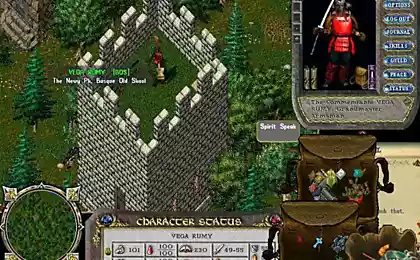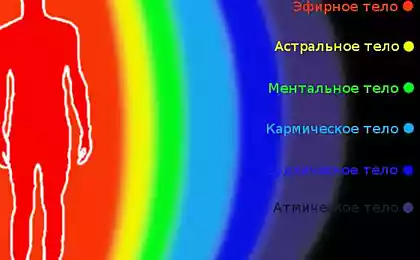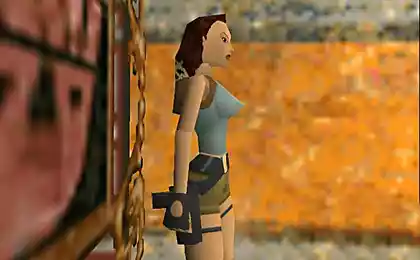803
Psychosomatic game Do not hide behind your own body
Few
theory Recognizing the diversity of functions of psychosomatic symptoms, in this article I propose to focus on just one of them - communicative. I want here to present a slightly different perspective - to look at the psychosomatic symptom like a violation of the external (between I and others) and internal (between parts I) communication, in which the body is used as an intermediary
.
A few definitions:
Psychosomatic symptom - a symptom that is caused by psychological factors, reasons, but manifested bodily (somatic) diseases in the form of individual organs or systems
. Psychosomatic client - a person using as protection from stressful factors mainly the body
. Despite the fact that, based on the definition, psychosomatic symptoms have psychological causes, and consequently get rid of them the person can and must be psychological means, they are predominantly doctors in our reality. I will not criticize the status quo, except to say that this fact is not something unnatural. Usually, when a person has formed any psychosomatic illness, at this point, the catfish is quite significantly affected, not to be overlooked by medical professionals. It is not surprising in this situation, and that they are engaged in treatment of such diseases. Although, in my opinion, hardly original in this matter, for good results must work together doctor and psychologist.
I'm in my article I will not be confined to psychosomatic diseases. And I will be considered a psychosomatic symptom of systemic response to any loss resulting from the impact of psychological factors of the plan.
Why is the game?
I propose to consider the psychosomatic symptom as a component of the game, in which the body unconsciously involved.
Bodily symptom in this game serves as a mediator between the self and other real or between the self and alienated aspects I (non-Self).
This psychosomatic game, in which the body loses (surrenders, the victim) I for some purposes.
Why I use the term "game"? It has all the basic structural components described in E. Berne characteristics of psychological games.
Hidden level transactions. Here, as in any psychological game, there is an explicit (conscious) and hidden (unconscious) level of communication.
The presence of psychological payoff. In this way, a number of needs can be satisfied: a rest, attention, care, love, etc.
. The automated nature of the interaction. It is stable and stereotyped.
Who are the participants of this game?
I - no, I (The other person or rejects part I), the body. The psychosomatic symptoms are always present other: Are significant, generalized, I like other
. When we hide behind your body and resort to psychosomatic game? When we do not have the courage to meet with each other and themselves. As a result, we avoid direct communication and cover his body.
Here are some of the most common variants of the body use to communicate:
We are ashamed to refuse Other. How many of you will not remember a situation where you are keeping the loyalty of others, did not refer to any bodily illness or sickness, to deny them? Such a method, it must be said, does not cause any symptoms, if a person starts a process of guilt feelings, conscience - "need to do something with his tarnished image"? Psychosomatic symptom occurs just when a person is difficult to recognize and accept the "bad" aspects of their H. It is any illness there is a "not for excuses," and the present.
We are afraid to refuse Other. Another is a real danger, and the forces are unequal. For example, in cases of parent-child relationship when the child is difficult to oppose their desire to adults.
If we do something we do not want, but we are afraid to say it openly, we can use your body - "renting" it in psychosomatic game
. We are "renting" your body, when:
We want peace in the family: "If only everything was quiet" - the cat Leopold position;
We do not want (afraid) to say to someone, "No»;
We want (again, afraid) that God forbid bad about us not think: "It is necessary to keep a person!»;
We are afraid / ashamed to ask for anything for themselves, considering that the others must guess yourself;
In general, we are afraid to change anything in my life ...
I think that you can easily continue this list.
As a result of doing nothing and waiting, waiting, waiting ... hoping that something will happen to us miraculously. It happens, but it looks like it is not wonderful, and sometimes fatal.
Psychosomatic client A good and simple solution for psychosomatic client will deal with their fears and projective try to establish direct communication.
Typically, the recovery occurs quickly enough after being unable to regain a healthy aggression and learn to manage it in contact with the other and with a ... In the language of Gestalt therapy, this thesis is as follows: Recognize and accept your retrofleksirovannuyu (withheld and reversed itself) aggression and direct it to the site of their frustrated needs.
Aggression in this sense is one of the few effective ways to defend their psychological boundaries, protect and preserve their psychosomatic space.
But psychosomatic customer enters another. He is not looking for easy ways. He is too intelligent and educated for this. He chooses to communicate body language in every way to avoid aggression.
Symptom - it is always a withdrawal from the contact. And if neurotically organized client "transfers," this contact in their subjective space and their feelings (and not only them) are living in the form of internal dialogue with the offender, the psychosomatic-organized customer wins back all symbolically connecting body. Symptom - a monument at the grave of contact
. "I will not meet directly with others, with their fears, to speak directly about their needs - I will post instead of himself his body" - this is an unconscious psychosomatic client installation
. "To suffer, to be silent and go away" - this is his slogan in distressed situations interaction
. For such customers is more important to maintain its fragile peace, my dear ideal self-image, its illusory stability.
Psychosomatics and codependency
Codependent relationships - good soil for the appearance of psychosomatic symptoms
. What is the co-dependent relationship? In the absence of differentiation of self-image, and weak borders. Co-dependent people have a vague idea of the Self, of his desires, needs. In relationships it is more focused on others. In a situation of choice between myself and others, he "chooses" as a victim of his own body. However, this choice is not a real choice. This automated method of contact-dependent human relations.
Why such a sacrifice, you say? To be good in the eyes of others and his own eyes.
However, not always there is a need to sacrifice. In the adult, even depending on the other, there is always a choice. The best of them, of course, is psychotherapy.
With children, everything is much more complicated. The child has no choice, it is difficult to express their will, especially in toxic corrosive environment. He is completely dependent on significant others. Is it not better the situation is and in a situation of use of parental figures of guilt and shame. Naturally, this is all done "for his own good" and "out of love for him».
I refer to a beautiful example of the film "Bury Me Behind the Baseboard».
The child shown in the family system can only survive aching. Then the adult members of the system appear to him at least some human feelings - for example, sympathy. As soon as he starts to show his adult self installation - system instantly reacts very aggressively. The only way for a child to survive in such a system is the rejection of its I and a whole bunch of heavy somatic diseases.
In the adult is at least an option of psychotherapy, the child is deprived of the same. As in the situation with system-dependent child goes to therapy as a systemic symptom of the installation "to get rid of the disease, without changing anything in the family system»
. And for an adult to break out of codependent family system it is often very difficult, and for some even impossible.
Here is a sample of the adult, not less tragic manifestations of psychosomatic medicine as a consequence of co-dependent relationship of his own therapeutic practice.
S. The client, a woman 40 years old, not married, their age has a big bouquet of diseases. In recent years it has become a serious obstacle to its work. Although the legitimacy of the work passes (medical records), there is a real threat of a further failure to conclude a contract - the number of days spent it at the hospital, was higher than on weekdays. The final diagnosis that prompted C. to therapy was
«anorexia." When I was listening to the client, I have always pursued the question: "How is it that this still young age woman looks sick, emaciated old woman?" "What kind of ground on which so magnificently blossoming various ailments?"
.
A study of her personal history is not allowed to cling to something serious: none of the events of her life does not look stressful: the only child in the family, Mom, Dad, kindergarten, school, college, work in a good company. The only exception was the death of her father at the age of 50 10 years ago, which was difficult to write off everything.
The mystery was solved thanks to an unexpected event, I accidentally saw her walking with her mother. What I saw shocked me. I even began to doubt initially - there is my client? They walked down the street like two girlfriends - holding hands. I would even say that the client's mother looked younger - all of it glowed with energy and beauty! The same can not be said of my client - unfashionable clothes, hunched back, dull eyes, even the choice of paint color for the hair some silver-gray - its all much older. In my head there was a clear association - Rapunzel and her mother-witch takes her youth, energy and beauty! Here it is the solution of all her illnesses and poor health - malignant co-dependent relationship
! As it turned out, this kind of relationship has always existed in the life of the client, but more aggravated after the death of his father - the whole strength of the parent "love" a flood struck the mother of S., and before lived life daughter, after her husband's death is entirely focused on her. From the life of his daughter (it must be said before a very beautiful and graceful girl - pointing your photos) gradually disappeared all suitors, a few friends: Mom replaced all
! The result of numerous physical ailments, as I wrote, has become anorexia. It also, of course, is of interest. The fact that it is a mental illness that is characteristic in most cases for adolescent girls, the unconscious symbolizes the unresolved conflict between daughter and mother in the separation plan. Psychoanalysts, having studied the history of my client, would say, probably, something like: "The daughter can not eat and digest its mother, since she too is poisonous!". Despite the different theoretical views, I think that most physicians would agree with the definition of this kind of relationship between mother and daughter as the co-dependents.
What to do?
My experience with psychosomatic customers turned out to be successful, when in the course of therapy could convince them to blame their problems. Although in itself it is not easy.
Here is some scheme of work with the client, is presented as a request psychosomatic symptom:
First we need to understand the manipulative behavior patterns;
Aware of the needs that are met in such a way symptomatic;
To realize those feelings (fear, shame, guilt) or introjects that trigger manipulative behavior;
To live these fears. What happens if that happens?
Try a different way to contact. To master the possibility of dialogue between the ego and symptom. Here, in my opinion, the most successful are the traditional techniques of Gestalt approach work with an empty chair.
As a rule, the essence of the work with the symptom is the ability to establish a dialogue between the ego and symptom in this dialog to hear symptoms as an aspect of his alienated, and I "agree" with it.
What are you trying to say symptom?
What is silent symptom?
What he needs?
What he lacks?
From what cautions?
How does it help you?
What does change in your life?
Why would he want to change that?
The client agrees with the symptom to be attentive to his message and gives a promise to fulfill a condition to go away illness.
Author: Gennady Maleychuk
theory Recognizing the diversity of functions of psychosomatic symptoms, in this article I propose to focus on just one of them - communicative. I want here to present a slightly different perspective - to look at the psychosomatic symptom like a violation of the external (between I and others) and internal (between parts I) communication, in which the body is used as an intermediary
.

A few definitions:
Psychosomatic symptom - a symptom that is caused by psychological factors, reasons, but manifested bodily (somatic) diseases in the form of individual organs or systems
. Psychosomatic client - a person using as protection from stressful factors mainly the body
. Despite the fact that, based on the definition, psychosomatic symptoms have psychological causes, and consequently get rid of them the person can and must be psychological means, they are predominantly doctors in our reality. I will not criticize the status quo, except to say that this fact is not something unnatural. Usually, when a person has formed any psychosomatic illness, at this point, the catfish is quite significantly affected, not to be overlooked by medical professionals. It is not surprising in this situation, and that they are engaged in treatment of such diseases. Although, in my opinion, hardly original in this matter, for good results must work together doctor and psychologist.
I'm in my article I will not be confined to psychosomatic diseases. And I will be considered a psychosomatic symptom of systemic response to any loss resulting from the impact of psychological factors of the plan.
Why is the game?
I propose to consider the psychosomatic symptom as a component of the game, in which the body unconsciously involved.
Bodily symptom in this game serves as a mediator between the self and other real or between the self and alienated aspects I (non-Self).
This psychosomatic game, in which the body loses (surrenders, the victim) I for some purposes.
Why I use the term "game"? It has all the basic structural components described in E. Berne characteristics of psychological games.
Hidden level transactions. Here, as in any psychological game, there is an explicit (conscious) and hidden (unconscious) level of communication.
The presence of psychological payoff. In this way, a number of needs can be satisfied: a rest, attention, care, love, etc.
. The automated nature of the interaction. It is stable and stereotyped.
Who are the participants of this game?
I - no, I (The other person or rejects part I), the body. The psychosomatic symptoms are always present other: Are significant, generalized, I like other
. When we hide behind your body and resort to psychosomatic game? When we do not have the courage to meet with each other and themselves. As a result, we avoid direct communication and cover his body.
Here are some of the most common variants of the body use to communicate:
We are ashamed to refuse Other. How many of you will not remember a situation where you are keeping the loyalty of others, did not refer to any bodily illness or sickness, to deny them? Such a method, it must be said, does not cause any symptoms, if a person starts a process of guilt feelings, conscience - "need to do something with his tarnished image"? Psychosomatic symptom occurs just when a person is difficult to recognize and accept the "bad" aspects of their H. It is any illness there is a "not for excuses," and the present.
We are afraid to refuse Other. Another is a real danger, and the forces are unequal. For example, in cases of parent-child relationship when the child is difficult to oppose their desire to adults.
If we do something we do not want, but we are afraid to say it openly, we can use your body - "renting" it in psychosomatic game
. We are "renting" your body, when:
We want peace in the family: "If only everything was quiet" - the cat Leopold position;
We do not want (afraid) to say to someone, "No»;
We want (again, afraid) that God forbid bad about us not think: "It is necessary to keep a person!»;
We are afraid / ashamed to ask for anything for themselves, considering that the others must guess yourself;
In general, we are afraid to change anything in my life ...
I think that you can easily continue this list.
As a result of doing nothing and waiting, waiting, waiting ... hoping that something will happen to us miraculously. It happens, but it looks like it is not wonderful, and sometimes fatal.
Psychosomatic client A good and simple solution for psychosomatic client will deal with their fears and projective try to establish direct communication.
Typically, the recovery occurs quickly enough after being unable to regain a healthy aggression and learn to manage it in contact with the other and with a ... In the language of Gestalt therapy, this thesis is as follows: Recognize and accept your retrofleksirovannuyu (withheld and reversed itself) aggression and direct it to the site of their frustrated needs.
Aggression in this sense is one of the few effective ways to defend their psychological boundaries, protect and preserve their psychosomatic space.
But psychosomatic customer enters another. He is not looking for easy ways. He is too intelligent and educated for this. He chooses to communicate body language in every way to avoid aggression.
Symptom - it is always a withdrawal from the contact. And if neurotically organized client "transfers," this contact in their subjective space and their feelings (and not only them) are living in the form of internal dialogue with the offender, the psychosomatic-organized customer wins back all symbolically connecting body. Symptom - a monument at the grave of contact
. "I will not meet directly with others, with their fears, to speak directly about their needs - I will post instead of himself his body" - this is an unconscious psychosomatic client installation
. "To suffer, to be silent and go away" - this is his slogan in distressed situations interaction
. For such customers is more important to maintain its fragile peace, my dear ideal self-image, its illusory stability.
Psychosomatics and codependency
Codependent relationships - good soil for the appearance of psychosomatic symptoms
. What is the co-dependent relationship? In the absence of differentiation of self-image, and weak borders. Co-dependent people have a vague idea of the Self, of his desires, needs. In relationships it is more focused on others. In a situation of choice between myself and others, he "chooses" as a victim of his own body. However, this choice is not a real choice. This automated method of contact-dependent human relations.
Why such a sacrifice, you say? To be good in the eyes of others and his own eyes.
However, not always there is a need to sacrifice. In the adult, even depending on the other, there is always a choice. The best of them, of course, is psychotherapy.
With children, everything is much more complicated. The child has no choice, it is difficult to express their will, especially in toxic corrosive environment. He is completely dependent on significant others. Is it not better the situation is and in a situation of use of parental figures of guilt and shame. Naturally, this is all done "for his own good" and "out of love for him».
I refer to a beautiful example of the film "Bury Me Behind the Baseboard».
The child shown in the family system can only survive aching. Then the adult members of the system appear to him at least some human feelings - for example, sympathy. As soon as he starts to show his adult self installation - system instantly reacts very aggressively. The only way for a child to survive in such a system is the rejection of its I and a whole bunch of heavy somatic diseases.
In the adult is at least an option of psychotherapy, the child is deprived of the same. As in the situation with system-dependent child goes to therapy as a systemic symptom of the installation "to get rid of the disease, without changing anything in the family system»
. And for an adult to break out of codependent family system it is often very difficult, and for some even impossible.
Here is a sample of the adult, not less tragic manifestations of psychosomatic medicine as a consequence of co-dependent relationship of his own therapeutic practice.
S. The client, a woman 40 years old, not married, their age has a big bouquet of diseases. In recent years it has become a serious obstacle to its work. Although the legitimacy of the work passes (medical records), there is a real threat of a further failure to conclude a contract - the number of days spent it at the hospital, was higher than on weekdays. The final diagnosis that prompted C. to therapy was
«anorexia." When I was listening to the client, I have always pursued the question: "How is it that this still young age woman looks sick, emaciated old woman?" "What kind of ground on which so magnificently blossoming various ailments?"
.
A study of her personal history is not allowed to cling to something serious: none of the events of her life does not look stressful: the only child in the family, Mom, Dad, kindergarten, school, college, work in a good company. The only exception was the death of her father at the age of 50 10 years ago, which was difficult to write off everything.
The mystery was solved thanks to an unexpected event, I accidentally saw her walking with her mother. What I saw shocked me. I even began to doubt initially - there is my client? They walked down the street like two girlfriends - holding hands. I would even say that the client's mother looked younger - all of it glowed with energy and beauty! The same can not be said of my client - unfashionable clothes, hunched back, dull eyes, even the choice of paint color for the hair some silver-gray - its all much older. In my head there was a clear association - Rapunzel and her mother-witch takes her youth, energy and beauty! Here it is the solution of all her illnesses and poor health - malignant co-dependent relationship
! As it turned out, this kind of relationship has always existed in the life of the client, but more aggravated after the death of his father - the whole strength of the parent "love" a flood struck the mother of S., and before lived life daughter, after her husband's death is entirely focused on her. From the life of his daughter (it must be said before a very beautiful and graceful girl - pointing your photos) gradually disappeared all suitors, a few friends: Mom replaced all
! The result of numerous physical ailments, as I wrote, has become anorexia. It also, of course, is of interest. The fact that it is a mental illness that is characteristic in most cases for adolescent girls, the unconscious symbolizes the unresolved conflict between daughter and mother in the separation plan. Psychoanalysts, having studied the history of my client, would say, probably, something like: "The daughter can not eat and digest its mother, since she too is poisonous!". Despite the different theoretical views, I think that most physicians would agree with the definition of this kind of relationship between mother and daughter as the co-dependents.
What to do?
My experience with psychosomatic customers turned out to be successful, when in the course of therapy could convince them to blame their problems. Although in itself it is not easy.
Here is some scheme of work with the client, is presented as a request psychosomatic symptom:
First we need to understand the manipulative behavior patterns;
Aware of the needs that are met in such a way symptomatic;
To realize those feelings (fear, shame, guilt) or introjects that trigger manipulative behavior;
To live these fears. What happens if that happens?
Try a different way to contact. To master the possibility of dialogue between the ego and symptom. Here, in my opinion, the most successful are the traditional techniques of Gestalt approach work with an empty chair.
As a rule, the essence of the work with the symptom is the ability to establish a dialogue between the ego and symptom in this dialog to hear symptoms as an aspect of his alienated, and I "agree" with it.
What are you trying to say symptom?
What is silent symptom?
What he needs?
What he lacks?
From what cautions?
How does it help you?
What does change in your life?
Why would he want to change that?
The client agrees with the symptom to be attentive to his message and gives a promise to fulfill a condition to go away illness.
Author: Gennady Maleychuk























